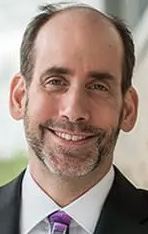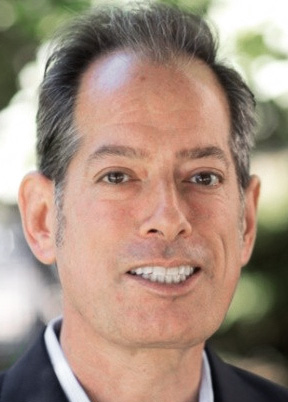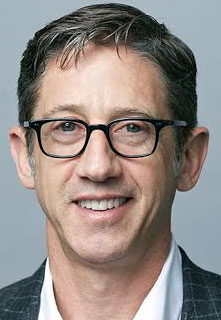

 The early designers of the Internet quickly realized that as the number of domain names flourished, there was a need for tracking domain name owners to resolve questions and conflicts that might arise. To that end, they created WHOIS, a public database with the names, phone numbers, email addresses, and mailing addresses of registered domain owners and operators.
The early designers of the Internet quickly realized that as the number of domain names flourished, there was a need for tracking domain name owners to resolve questions and conflicts that might arise. To that end, they created WHOIS, a public database with the names, phone numbers, email addresses, and mailing addresses of registered domain owners and operators.
 This article addresses the issues around the planned sale of the PIR .org registry by ISOC. It examines the history and issues plus looks at several possible paths forward, including PIR becoming a Benefit Corporation (B-Corp) and identifying possible alternative buyers who could retain PIR's non-profit status. Before Tim Bernier-Lee brought the HTML markup language to the Internet, starting in 1989, there were few registered domain names. Access for public registration started in 1986, and by December, there were about five dozen registered .com domain names.
This article addresses the issues around the planned sale of the PIR .org registry by ISOC. It examines the history and issues plus looks at several possible paths forward, including PIR becoming a Benefit Corporation (B-Corp) and identifying possible alternative buyers who could retain PIR's non-profit status. Before Tim Bernier-Lee brought the HTML markup language to the Internet, starting in 1989, there were few registered domain names. Access for public registration started in 1986, and by December, there were about five dozen registered .com domain names.
 The worst thing about Brexit wasn't the referendum. It was the fallout. David Cameron decided that the best way to manage a small risk was to take a big one. Finally, over three agonizing years later, the UK looks set to move on. The Internet Society – which has run the .ORG domain since 2002 – was in the same position as Cameron. They became convinced that it was worth dealing with a small risk by taking a huge one.
The worst thing about Brexit wasn't the referendum. It was the fallout. David Cameron decided that the best way to manage a small risk was to take a big one. Finally, over three agonizing years later, the UK looks set to move on. The Internet Society – which has run the .ORG domain since 2002 – was in the same position as Cameron. They became convinced that it was worth dealing with a small risk by taking a huge one.
 As the Internet has grown, so too have the abuses that go along with one of the world's most transformative technologies. For all of the positives the Internet brings, negatives like phishing, malware and child exploitation are a reality online. As of December 9, 2019, 48 registrars and registries have signed onto the "Framework to Address Abuse." This initiative was launched last month by a number of domain name registries and registrars, just prior to the ICANN meeting in Montreal.
As the Internet has grown, so too have the abuses that go along with one of the world's most transformative technologies. For all of the positives the Internet brings, negatives like phishing, malware and child exploitation are a reality online. As of December 9, 2019, 48 registrars and registries have signed onto the "Framework to Address Abuse." This initiative was launched last month by a number of domain name registries and registrars, just prior to the ICANN meeting in Montreal.
 The stakeholder community needs to get with the program and assert itself now – if it still can. The recent attempts by the Internet Society (ISOC) to wrap itself in the halo of Jon Postel's "original intent" for .org is specious and laughable. As I've previously published, Postel also didn't like how big the top-level domains were getting and suggested, in 1993, that top-level domains should be capped at 10,000 names and that further zone growth should happen at the second- and third-levels (similar to how the UK has .uk and then .com.uk, for example).
The stakeholder community needs to get with the program and assert itself now – if it still can. The recent attempts by the Internet Society (ISOC) to wrap itself in the halo of Jon Postel's "original intent" for .org is specious and laughable. As I've previously published, Postel also didn't like how big the top-level domains were getting and suggested, in 1993, that top-level domains should be capped at 10,000 names and that further zone growth should happen at the second- and third-levels (similar to how the UK has .uk and then .com.uk, for example).
 A year ago, under the leadership of the Internet Corporation for Assigned Names and Numbers (ICANN), the internet naming community completed the first-ever rollover of the cryptographic key that plays a critical role in securing internet traffic worldwide. The ultimate success of that endeavor was due in large part to outreach efforts by ICANN and Verisign which, when coupled with the tireless efforts of the global internet measurement community, ensured that this significant event did not disrupt internet name resolution functions for billions of end users.
A year ago, under the leadership of the Internet Corporation for Assigned Names and Numbers (ICANN), the internet naming community completed the first-ever rollover of the cryptographic key that plays a critical role in securing internet traffic worldwide. The ultimate success of that endeavor was due in large part to outreach efforts by ICANN and Verisign which, when coupled with the tireless efforts of the global internet measurement community, ensured that this significant event did not disrupt internet name resolution functions for billions of end users.
 I run a business. For years I've been in the ICANN Business Constituency, holding a series of different positions including Chair. Suffice it to say, I'm absolutely ok with making money and generally speaking, letting markets work. I also care about NGOs. For years our firm worked with PIR on the .NGO project. We got to see up close the role PIR has played as a supporter of NGOs online -- encouraging best practice, helping push out DNSSEC to a global audience, working on DNS abuse issues, supporting the sector.
I run a business. For years I've been in the ICANN Business Constituency, holding a series of different positions including Chair. Suffice it to say, I'm absolutely ok with making money and generally speaking, letting markets work. I also care about NGOs. For years our firm worked with PIR on the .NGO project. We got to see up close the role PIR has played as a supporter of NGOs online -- encouraging best practice, helping push out DNSSEC to a global audience, working on DNS abuse issues, supporting the sector.
 The announcement of the intended Internet Society (ISOC) sale of the .ORG registry to Ethos Capital has caused a lot of frustration and anger while raising a lot of questions.
The announcement of the intended Internet Society (ISOC) sale of the .ORG registry to Ethos Capital has caused a lot of frustration and anger while raising a lot of questions.
It's more than just about the money. It's more than who is behind it. It's about the soul of the DNS and the ICANN community with its multi-stakeholder model. Let's remember that the Public Interest Registry (PIR) was created, with ISOC as its sole legal owner, to provide ISOC with the funds to operate and to run the registry more-or-less as a Social Business.
 A recent exchange on CircleID highlighted a critical need for data to inform the debate on the impact of ICANN's post-GDPR WHOIS policy that resulted in the redaction of domain name registrant contact data. A bit of background: in my original post, I made the point that domain name abuse had increased post-GDPR. A reader who works with a registrar (according to his bio) commented: "Can you back up that statement with data? Our abuse desk has actually seen a reduction in abuse complaints."
A recent exchange on CircleID highlighted a critical need for data to inform the debate on the impact of ICANN's post-GDPR WHOIS policy that resulted in the redaction of domain name registrant contact data. A bit of background: in my original post, I made the point that domain name abuse had increased post-GDPR. A reader who works with a registrar (according to his bio) commented: "Can you back up that statement with data? Our abuse desk has actually seen a reduction in abuse complaints."
 Last Thursday, during VeriSign's Q3 2019 quarterly earnings call, CEO Jim Bidzos offered statements that seemed to be carefully calibrated to satisfy Wall Street's curiosity about protracted negotiations with ICANN on a Third Amendment to the .com Registry Agreement while also appearing to distance the company from the soon-to-be forthcoming product of that year-long effort.
Last Thursday, during VeriSign's Q3 2019 quarterly earnings call, CEO Jim Bidzos offered statements that seemed to be carefully calibrated to satisfy Wall Street's curiosity about protracted negotiations with ICANN on a Third Amendment to the .com Registry Agreement while also appearing to distance the company from the soon-to-be forthcoming product of that year-long effort.